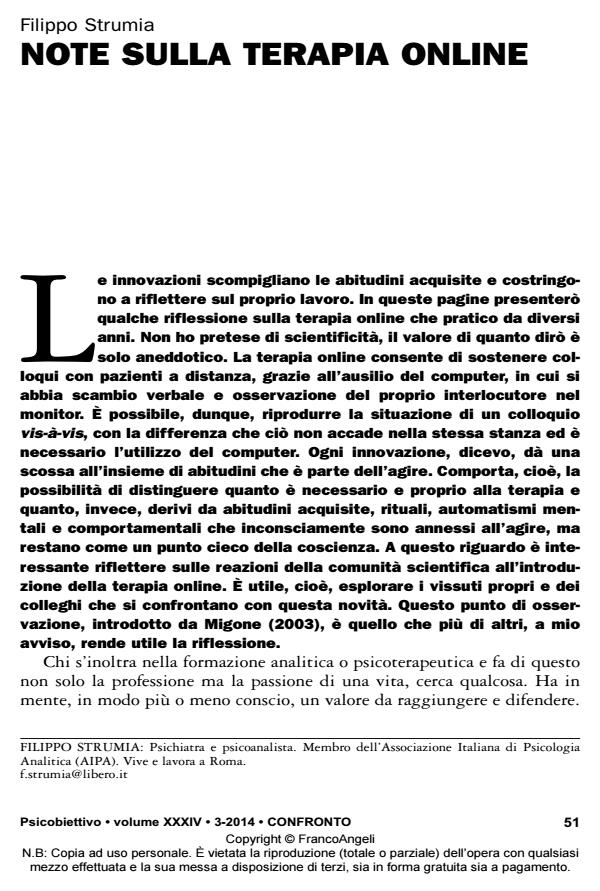Notes on online psychotherapy
Journal title PSICOBIETTIVO
Author/s Filippo Strumia
Publishing Year 2015 Issue 2014/3
Language Italian Pages 15 P. 51-65 File size 114 KB
DOI 10.3280/PSOB2014-003004
DOI is like a bar code for intellectual property: to have more infomation
click here
Below, you can see the article first page
If you want to buy this article in PDF format, you can do it, following the instructions to buy download credits

FrancoAngeli is member of Publishers International Linking Association, Inc (PILA), a not-for-profit association which run the CrossRef service enabling links to and from online scholarly content.
Online therapy is an innovation that forces the expert analyst to a sudden change of his habits. The ritual and repetitive behaviors play an important defensive role protecting the analyst from persecutory anxieties that, in my opinion, are characteristic and inevitable in analytic practice. Who takes care of his own and other people’s subjectivity, in fact, is exposed to imaginary persecution by the environment of origin. Similar anxieties affect who passes the Pillars of Hercules, or the act of grasping the forbidden Apple. For these reasons, in my opinion, online therapy frequently encountered criticism taking not only a technical character but also ethical. As if this evolution, stripping the practice of the usual ritual experience, might show the bare skin of our "guilty" subjectivity. In this article, I also suggest that, in the case of online therapy, it is important that the analyst does his best to improve the collaboration, rather than act as the subject of attachment.
Keywords: Online Psychoterapy; Attachment; Collaboration; Individuation
Filippo Strumia, Note sulla terapia online in "PSICOBIETTIVO" 3/2014, pp 51-65, DOI: 10.3280/PSOB2014-003004